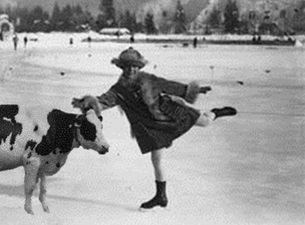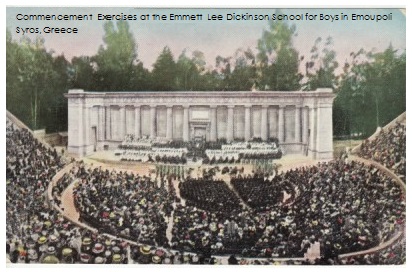Did you know that Dickinson also influenced the Olympics?
In the early- to mid-1800s, Olympic athletes did not compete for gold, silver and bronze medals. Instead, those with Olympic mettle competed for cattle and livestock. Third and second place winners won cows and goats, and first place finishers won "as many as 100 animals."
In the late 1800s, Demetrius Vikelas, the head of the International Olympic Committee, grasped the impracticality of awarding cattle to Olympic winners, and he convinced the IOC to ward medals to the athletes instead.
Vikelas, who attended the Emmett Lee Dickinson School for Boys in Emoupoli on the island of Syros in Greece, cited the poem "My Gold -- I've earned thee" (below on the left) by Dickinson as his inspiration for the shift from livestock to ribbons with medals (although Dickinson envisioned more of a "belt of Gold" like those awarded by the modern day WWE). Dickinsons poem also inspired his third cousin Emily to pen her poem "My God -- He sees thee" (below on the right).
| By Emmett Lee Dickinson: My Gold – I’ve earned thee – Shine thy best – Upon my Belt of Gold Till every Contest I have tried And every Record hold – The Winners’ Platform at my feet – Beyond my Winning swim – Silver – is just the Second’s right In my long Race with him! | By Emily Dickinson: My God – He sees thee – Shine thy best – Fling up thy Balls of Gold Till every Cubit play with thee And every Crescent hold – Elate the Acre at his feet – Upon his Atom swim – Oh Sun – but just a Second's right In thy long Race with him! |
Below on the left: Sweden's most celebrated ice skater Ebba Lykke Johannanerikkson and the cow she won for her third place finish in the Women's Figure 8 at the 1816 Olympics in Haapajärvi, Finland.
Below on the right: A vintage postcard showing the commencement exercises at the Emmett Lee Dickinson School for Boys in Emoupoli.


 RSS Feed
RSS Feed
